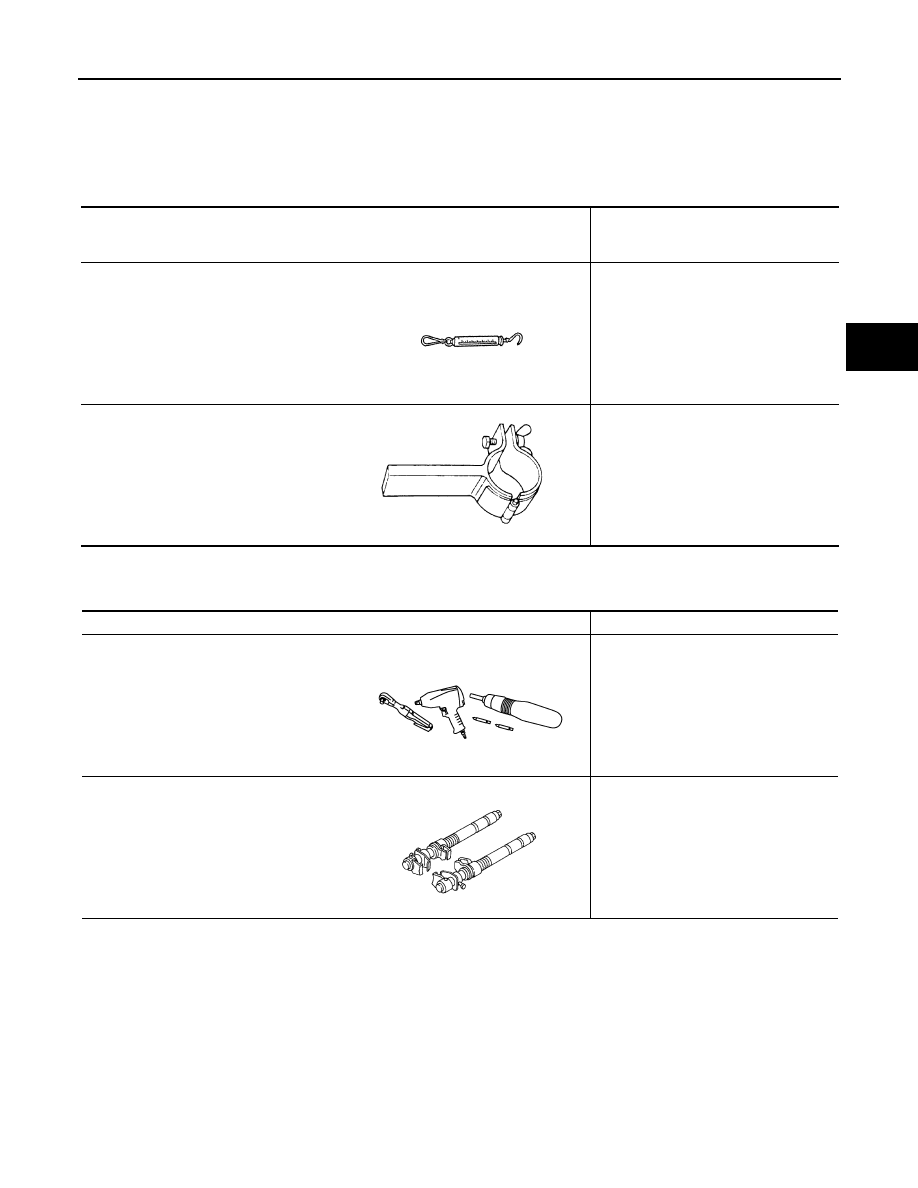Nissan Sentra. Manual - part 500

PREPARATION
FSU-3
< PREPARATION >
C
D
F
G
H
I
J
K
L
M
A
B
FSU
N
O
P
PREPARATION
PREPARATION
Special Service Tools
INFOID:0000000009758747
Commercial Service Tools
INFOID:0000000009758748
Tool number
(TechMate No.)
Tool name
Description
—
(J-44372)
Pull Gauge
Measuring ball joint swinging force
ST35652000
( — )
Strut attachment
Disassembling and assembling strut
LST024
ZZA0807D
Tool name
Description
Power tool
Loosening nuts, screws and bolts
Spring compressor
Removing and installing coil spring
PIIB1407E
S-NT717